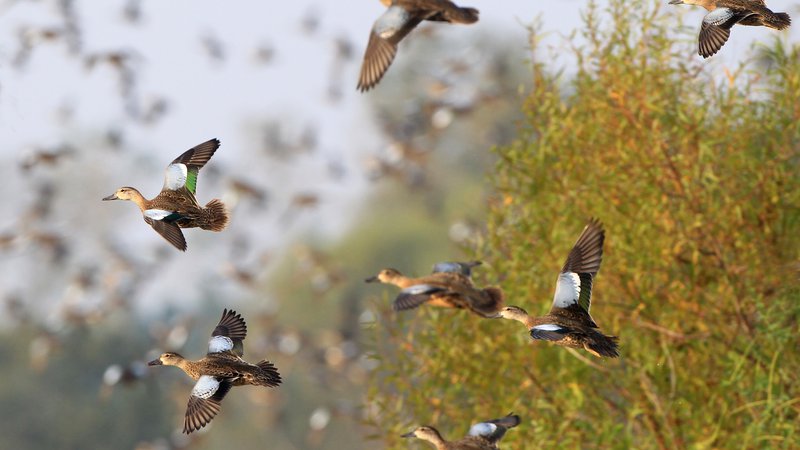Early teal season offers first chance for Arkansas duck hunters
ON 09-13-2019

Sept. 13, 2019
Randy Zellers
Assistant Chief of Communications
LITTLE ROCK — Sunday marks the first shot hunters have at taking a duck his year, and it’s a tricky shot at that. The early teal season is open Sept. 15-30, so hunters can have an opportunity to harvest some of these small ducks that typically migrate before the rest of the crowd.
Teal, especially blue-winged teal, get on the move well before many other waterfowl. According to recent pre-season aerial surveys conducted by the Louisiana Department of Wildlife and Fisheries, more than 120,000 blue-winged teal have already been seen south of the Arkansas state line.
According to Jason “Buck” Jackson, wetland program biologist for the Arkansas Game and Fish Commission, Arkansas isn’t even halfway to the final destination for most blue-winged teal. They typically migrate as far South as South America, and hold the record for the longest migration ever recorded through duck banding data. A blue-winged teal that was banded near Oak Lake, Manitoba, was later harvested near Lima, Peru, more than 4,000 miles away.
This long flight makes Arkansas only a stopover for many of these speedy fliers, and by the time the main season rolls around, relatively few bluewings will remain within the borders of The Natural State. Green-winged teal, however, will be present throughout most of Arkansas’s duck season, and a few will show up early during the bluewing migration.
Their diet during their time here is mostly insects, which give them the fuel and protein needed to go the distance. Moist-soil habitats full of native vegetation are extremely attractive to them because of the amount of insects they hold this time of year.
Hunters may bag up to six of any teal (blue-winged, green-winged or cinnamon) per day. No other ducks are allowed to be harvested during this early opportunity. Because of the need to discern a teal from any other similar-sized waterfowl. early teal season calls for a morning start at sunrise, rather than the half-hour before allowed during regular waterfowl season. All other federal regulations apply during the hunt, including the requirement for non-toxic shot and the restriction for shotguns to only hold three shells at a time. Hunters need to have their hunting license as well as a federal migratory waterfowl stamp, state duck stamp and must be registered in the Harvest Information Program.
Teal are notorious for being hard to hit. Their erratic flight rivals that of dove, and they tend to rocket into the decoy spread with a splash instead of slowing down and presenting an easier shot. Because of their ability to dart through the green vegetation, veteran hunters typically use No. 4 and even No. 6 shot when pursuing these ducks. The smaller size allows more shot in the pattern and encourages closer shots, which help give hunters one more look at the duck for a positive identification.
Recent News
Subscribe to Our Weekly Newsletter E-mails
Don’t miss another issue. Sign up now to receive the AGFC Wildlife Weekly Newsletter in your mailbox every Wednesday afternoon (Waterfowl Reports are published weekly during waterfowl season and periodically outside the season). Fishing Reports arrive on Thursdays. Fill in the following fields and hit submit. Thanks, and welcome!


